Accommodations: Metropole Hotel by Semarah
Before I talk about our day, i just wanted to share some interesting things about Latvia:
Latvia is known as The Land of Lilacs and Riga is especially known for its lilacs and has regulations against picking them. However, the city of Dobele, not Riga, is actually the most well-known land of lilacs, because of its lilac garden at the Institute of Horticulture where one of the world’s largest collections of lilacs can be found. That being said, the lilac trees are blooming all over Riga and the floral bouquet that wafts into the air is so pleasant as you walk by. Lilacs are one of my favorite flowers so I’m truly enjoying the lovely fragrant clusters that are all around.
The Latvian flag. The flag has a red stripe top and bottom with a white stripe in between. The story goes that a soldier was wounded in battle and the sheet on which he was placed was stained by his blood with only the center stripe of the sheet remaining white, hence the flag of Latvia was created.
Now on to our day.
After breakfast we met with Dr. Karlis Bukovskis, the Director of the Latvian Institute of International Affairs and an Associate Professor at Riga Stradins University. He spoke about what it was like for a country like Latvia to get where it is today. He told us of his days as a child under Soviet rule and how he and his friends stood at the corner store where the shelves were bare, waiting for the truck that would deliver bread and milk and if the kids were very lucky, perhaps some ice cream. Only chocolate and vanilla would be available, but it was a treat they always hoped for.
He spoke of how the Soviets took over private farms and made them into collectives. When the Soviet government collapsed, if the farmers or their relatives were still alive, they had to find the deeds to the property so they could reclaim it. By that time, most of those farmers and their families had either died or had left and pursued other jobs so they were no longer interested in the farming life. They often times used the property and house that they had previously owned, as a summer cottage and then either sold the property at a very low price or rented it to people who actually did want to continue to farm.
Latvia became independent in 1991 and the government and free economic system redeveloped. Latvia became part of the European Union and NATO in 2004. Banks in the country were able to expand and foreign banks, especially Scandinavian ones, began to pour money into the country. Now, the people who had suffered under Soviet rule could borrow money to buy the things they wanted. But prosperous times didn’t last. The collapse of Lehman Bros. affected the economy drastically. Following this event, the country went on austerity and has been able to triple its GDP since then.
Recently, however, Latvia realized it could not keep spending money on social programs as they had been doing, because they realized they had to put more money into defense, given what is happening in the Ukraine.
He was a very interesting speaker and we learned a lot about Latvia and the struggles the country has been through, much of which I spoke about in yesterday’s blog post . He mentioned many times during his talk how grateful the Latvians are for the US aid to Ukraine to help them fight the Russians.
Then we boarded our minibus and traveled through the countryside to Rundale Palace. The 138 room, 18th century, baroque-designed palace was designed by the Italian-Russian architect Rastrelli (who also constructed the Winter Palace in St. Peterburg). In 1735, the Duke of Courland, Ernst Johann von Biron, purchased land that had a medieval castle on the premises. The castle was torn down and construction began in 1736 on a new one that the Duke planned to use as his summer residence. However, Biron was exiled, so the palace stood empty for many years until he finally was able to return in 1762 and construction was finally completed in 1768. He died in 1772.
The Duchy of Courland was absorbed by the Russian Empire in 1795 and Catherine the Great gave the palace to the youngest brother of her lover Prince Zubov until he died. Following his death, his young widow married Count Shuvalov, and the palace eventually passed into the control of the Shuvalov family.
During the French Invasion of Russia in 1813, the palace was used as a hospital for Napoleon’s army, and during the German occupation in WWI, the Germans turned the palace once again into a hospital.
The palace went through many more unconventional uses by different regimes through wars, etc. until finally in 1972, the Rundale Palace Museum was established and extensive research was done to restore the palace to its original beauty. During the restoration undertaking, which eventually finished in 2015, the total cost wound up to be 8,420,495 euros, funded by private donations as well as the state of Latvia.
The palace is magnificent with its intricate decorations on the walls and ceilings created from stucco in the Rococo style. Oil paintings that have been carefully and painstakingly restored, and original furniture and artifacts grace the many rooms.
We then went for lunch at The White House, a restaurant that was within walking distance from the palace. Allan and I enjoyed a dark beer that complemented the delicious lunch.
Then, back to the palace to roam the beautiful gardens with gorgeous tulips and pansies in bloom and manicured trees and hedges lining the walkways. The garden is known for its rose bushes, but of course it was too early in the season to see them blooming.
We came back to the hotel and…wait for it…had McDonald’s! The meal was much cheaper than the same meal we get at home and it was just as good. We were just too tired from walking all day to try to find a local restaurant to eat at.
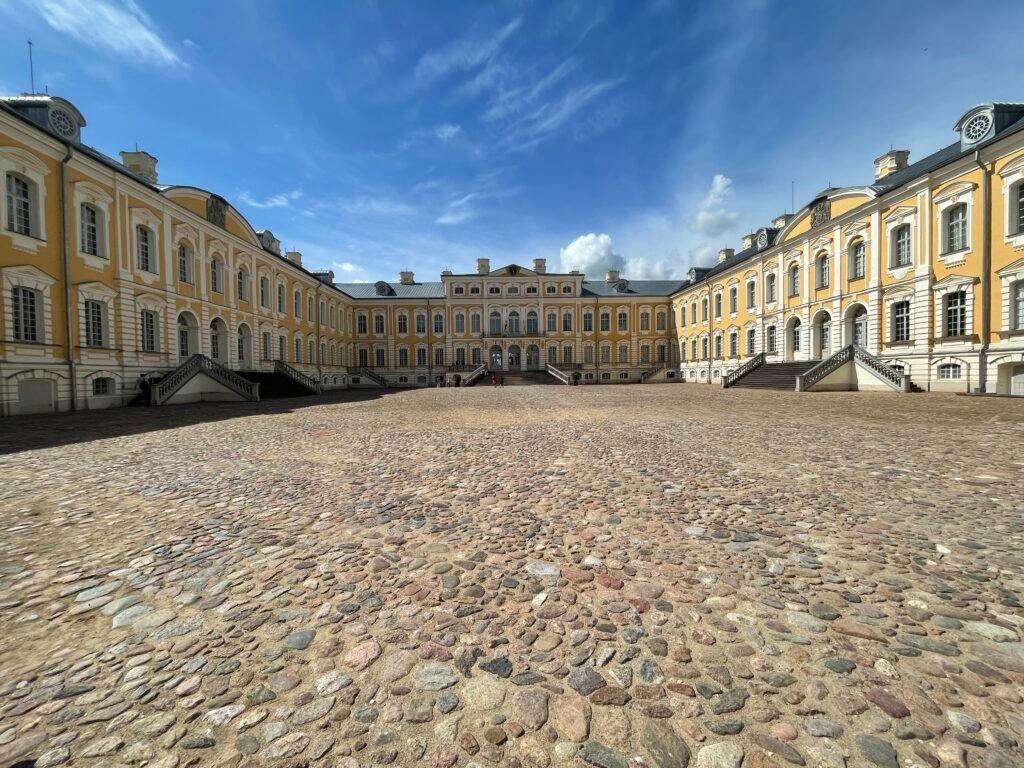
Rundale Palace
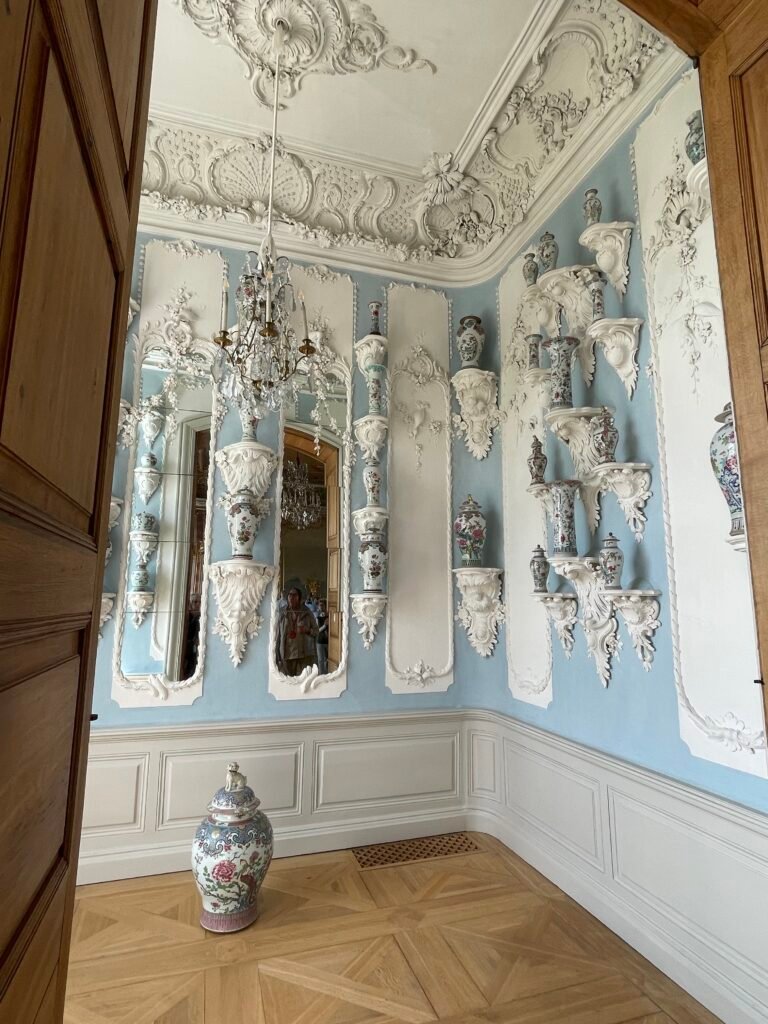
Notice the ornate stucco designs on the ceiling
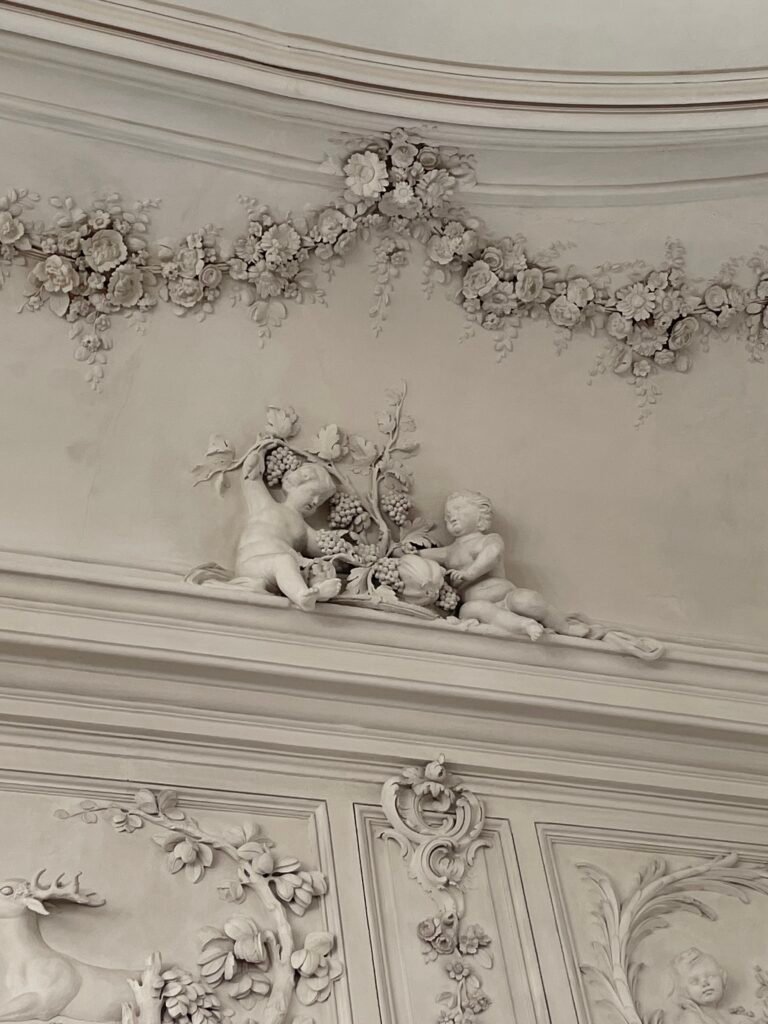

Roses were very common to have in rooms, even in male bedrooms. It was the fashion and the roses depicted the ornate baroque and rococo style.

This photo shows the before and after of a painting that was restored.

The long hallway.

In the left hand corner, notice the white structure. These structures were heaters for the different rooms and were fed logs by the servants.

Notice the “marble” on the wall. It is not marble, but rather a technique used to depict marble. One would think this was a cheaper way to have marble on the walls, but actually, the process to obtain the desired marble effect was time-consuming and expensive, costing much more than marble itself.
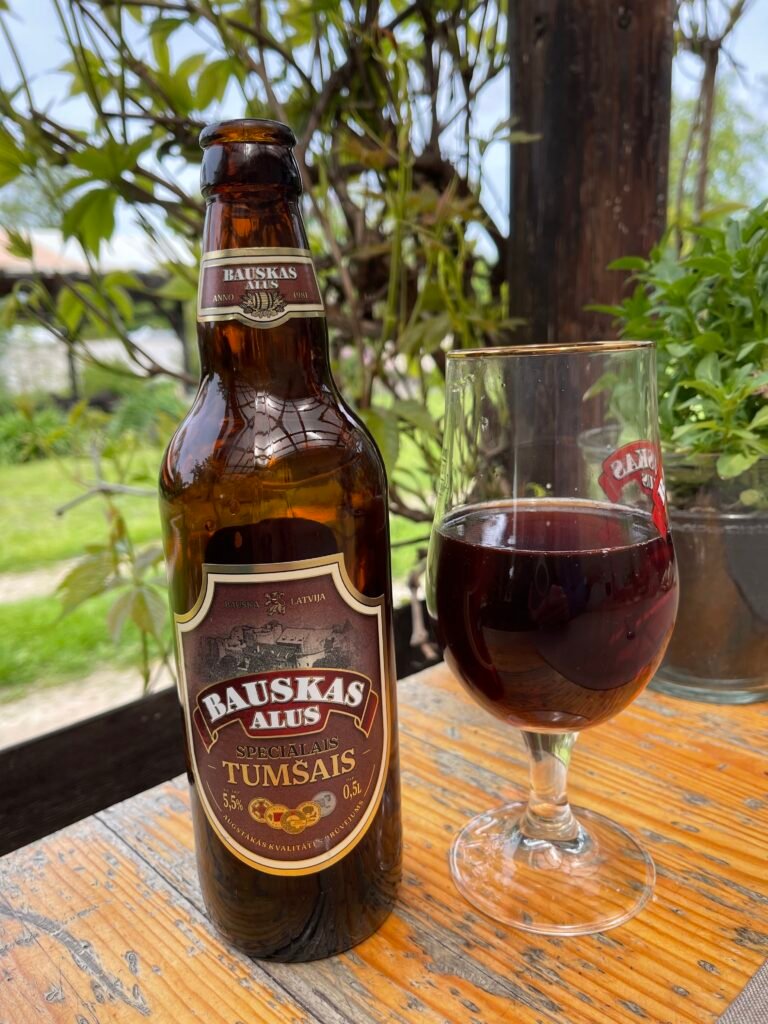
Our really good dark beer.

Lilacs bloom everywhere throughout Riga.
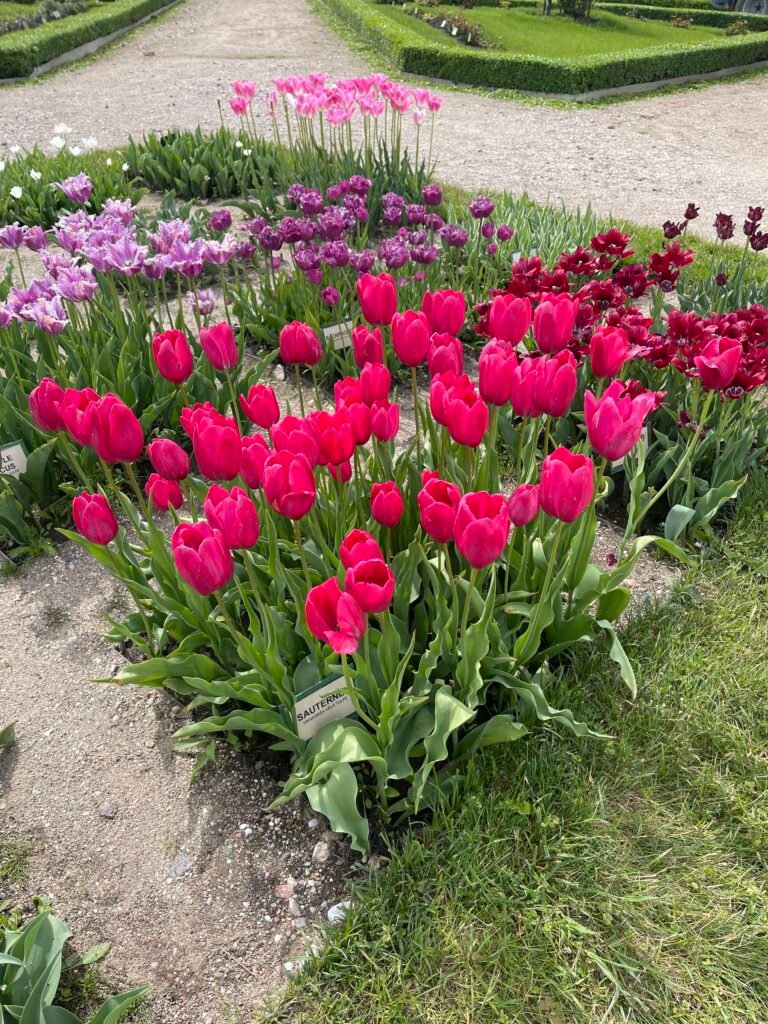
Tulips blooming in the palace garden.

So beautiful. (And the gardens were pretty spectacular too!). (Allan has not gained weight. He has his knapsack under his jacket. lol!)

Trees and hedges lining the walls

We were lucky that many flowers were blooming.
